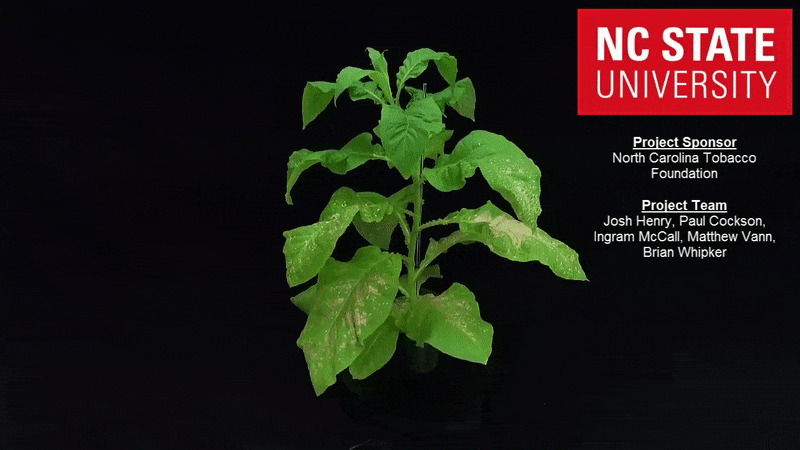From the Field-Agronomy Notes: Vol. 2, Num. 13
go.ncsu.edu/readext?474358
en Español / em Português
El inglés es el idioma de control de esta página. En la medida en que haya algún conflicto entre la traducción al inglés y la traducción, el inglés prevalece.
Al hacer clic en el enlace de traducción se activa un servicio de traducción gratuito para convertir la página al español. Al igual que con cualquier traducción por Internet, la conversión no es sensible al contexto y puede que no traduzca el texto en su significado original. NC State Extension no garantiza la exactitud del texto traducido. Por favor, tenga en cuenta que algunas aplicaciones y/o servicios pueden no funcionar como se espera cuando se traducen.
Português
Inglês é o idioma de controle desta página. Na medida que haja algum conflito entre o texto original em Inglês e a tradução, o Inglês prevalece.
Ao clicar no link de tradução, um serviço gratuito de tradução será ativado para converter a página para o Português. Como em qualquer tradução pela internet, a conversão não é sensivel ao contexto e pode não ocorrer a tradução para o significado orginal. O serviço de Extensão da Carolina do Norte (NC State Extension) não garante a exatidão do texto traduzido. Por favor, observe que algumas funções ou serviços podem não funcionar como esperado após a tradução.
English
English is the controlling language of this page. To the extent there is any conflict between the English text and the translation, English controls.
Clicking on the translation link activates a free translation service to convert the page to Spanish. As with any Internet translation, the conversion is not context-sensitive and may not translate the text to its original meaning. NC State Extension does not guarantee the accuracy of the translated text. Please note that some applications and/or services may not function as expected when translated.
Collapse ▲Tobacco Research Update: Manganese Deficiency of Tobacco
In this tobacco research update, we highlight the symptoms of manganese deficiency. These images are part of a project supported by the North Carolina Tobacco Foundation to develop a web-based diagnostic key for the identification of nutrient disorders of tobacco.
Manganese (Mn) deficiency begins as an interveinal chlorosis on the upper leaves (Fig. 1). As the symptoms progress, the interveinal chlorosis takes on a pale netted appearance (Fig. 2). This symptom will work its way down the plant until it covers the majority of the foliage. Symptomatic plants will start to become stunted when compared to healthy plants (Fig.3). At this point, symptoms begin to diverge between burley and flue cured tobacco.

Figure 1. Early manganese deficiency symptoms occurring on the upper leaves (right), compared with the upper foliage of a healthy plant (left).
©2017 Forensic Floriculture

Figure 2. The pale netted pattern of chlorosis that occurs first on the upper foliage of manganese deficient plants.
©2017 Forensic Floriculture
With intermediate symptoms, burley tobacco will start to develop small white spots (Fig. 4), but will retain the prominent netted chlorosis observed earlier. As symptoms progress, the majority of the foliage will also become very pale, with only the youngest leaves remaining green (Fig. 5). Flue cured tobacco will also begin to develop white spots, however these spots will quickly grow larger and become much more noticeable than the netted pattern (Fig. 6). These large necrotic spots will cover the majority of foliage, and occur primarily surrounding the midrib of the leaf (Fig. 7). The spots have a paper-thin texture and will tear very easily, quickly giving symptomatic leaves a ragged appearance.

Figure 3. Manganese deficient plants (right) will become stunted when compared with healthy tobacco plant (left).
©2017 Forensic Floriculture

Figure 4. White spotting will develop on manganese deficient plant foliage as symptoms worsen. The white spots typically occur near to the midrib.
©2017 Forensic Floriculture
When the white spots initially develop, the symptoms strongly resemble Weather Fleck, which is caused by exposure of plants to high ozone concentrations. These two issues are nearly indistinguishable; therefore, producers should collect tissue and soil samples to assist with correct identification. The netted appearance may also be confused with iron deficiency, although iron deficiency is uncommon in tobacco.

Figure 5. Foliage of burley tobacco plants will become quite pale as symptoms become severe, with only some green coloration remaining on the youngest leaves.
©2017 Forensic Floriculture

Figure 6. Flue cured tobacco will not become as pale, but will have much more prominent necrotic spotting as advanced deficiency symptoms.
©2017 Forensic Floriculture
An overall view of advanced Mn deficiency symptoms may be seen in the 360-degree image below (Fig. 8).

Figure 7. Leaves of flue cured tobacco with severe manganese deficiency will have very large necrotic lesions surrounding the midrib and throughout the center of the leaf.
©2017 Forensic Floriculture

Figure 8. Advanced symptoms may be seen on this 360-degree .gif image of a flue cured tobacco plant.
©2017 Forensic Floriculture
We would like to express our appreciation to the North Carolina Tobacco Foundation for supporting this project. We will be providing updates as symptoms progress over the course of the nutrient disorder induction phase of the experiment. Please visit our tobacco diagnostic key at https://diagnosis.ces.ncsu.edu/tobacco/ to view images and descriptions of each nutrient disorder along with corrective measures and management options.
Key Contact: Dr. Matthew Vann, Department of Crop and Soil Science
mcvann@ncsu.edu
Contributing Authors: Josh Henry, Paul Cockson, Matthew Vann, and Brian Whipker
Funding Source: North Carolina Tobacco Foundation
Project Team: Josh Henry (NC State M.S. student in Horticultural Science), Paul Cockson (NC State B.S. student in Agroecology), Ingram McCall (Research Technician in Horticultural Science), Rhonda Conlon (Extension IT at NC State), Matthew Vann (Tobacco Extension Specialist, Dept. of Crop and Soil Science), and Brian Whipker (Professor of Floriculture and Plant Nutrition in Horticultural Science).


